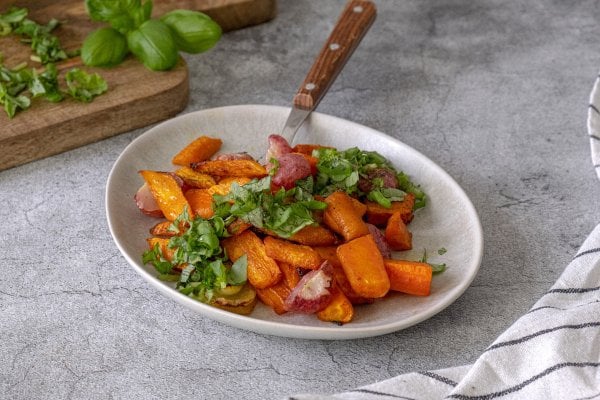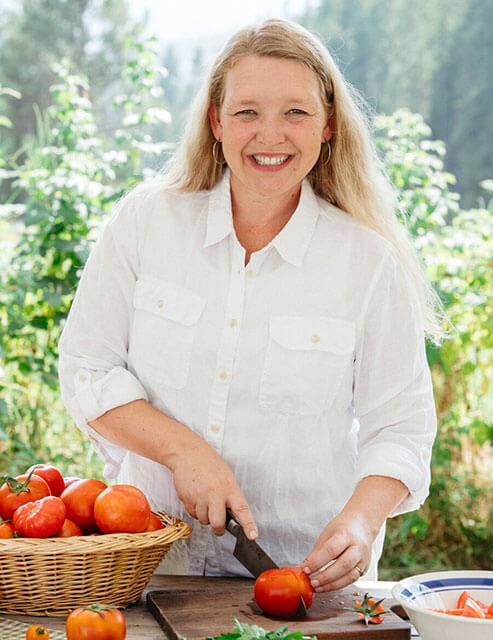Every spring, we eagerly await the emerging soil and can’t wait to get our hands dirty again! Then, we know all too well the feeling of garden overwhelm that quickly follows. But it doesn’t have to be this way! Here are our best tips for avoiding garden overwhelm and enjoying one of our favorite times of the year.

Avoiding overwhelm is something we always strive for here at Riverbend. We’ve shared before on what to do when homesteading feels urgent, how to enjoy stress-free holidays and preserving day tips for less overwhelm. It’s only natural we share our tips for less garden overwhelm, too (we’ve had plenty of practice in this category)!
When thinking about growing a year’s worth of food in the garden and raising a year’s worth of meat for our family, those are large projects to tackle each year! Keep in mind that we’re generally feeding upwards of 15 people at each meal. For you and your family, these same tasks may take a fraction of the time.
How to Avoid Garden Overwhelm
Let’s dive into how we can keep the garden enjoyable and a task we take pleasure in, rather than succumbing to the dreaded overwhelm of such a hefty task.
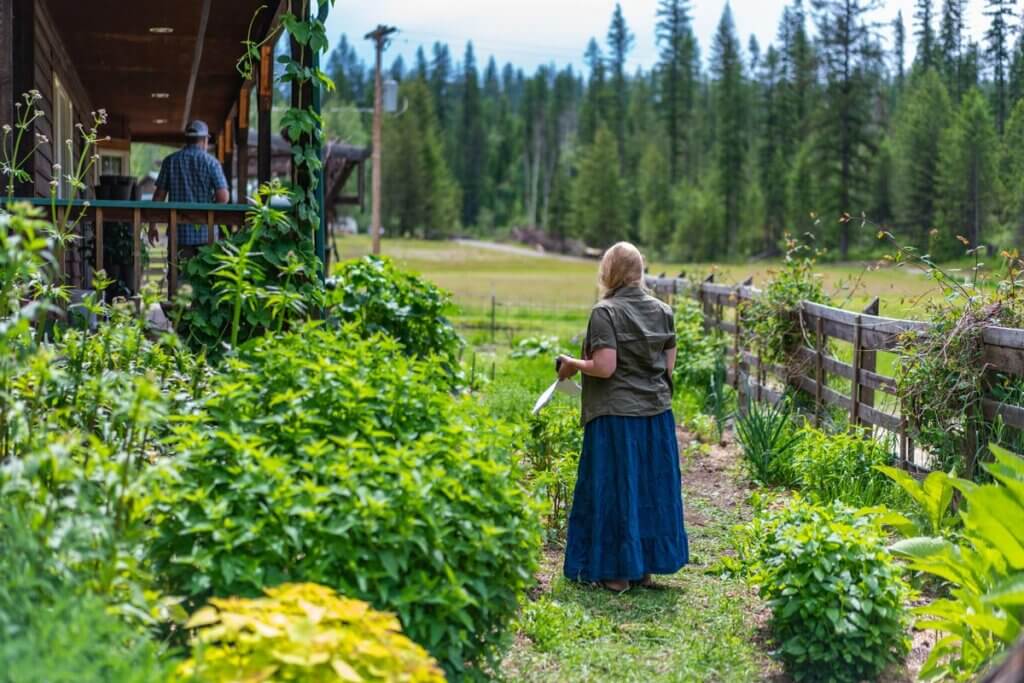
Walk the Garden Daily
Something I do on a daily basis is to walk through the garden with a notebook in hand. This walk is more for the enjoyment of our garden, especially the cottage garden as it’s filled with blooms and pollinators that we’ve attracted with specific plants.
While I’m strolling through the garden enjoying the fruits of my labor, I’ll take note of things that need to be done. I tend to create two lists. One is for “big project day tasks,” and the other is for “small projects/tasks.”
Some examples might be:
- Green beans that need to be picked, snapped and preserved – this would fall into the big project list as this will take a large chunk of time with plenty of preparation.
- A few weeds throughout the garden that could use some pulling – this would go on the small tasks list and I might assign it to one of the children to take care of at chore time.
This list can then be your roadmap for the time spent on your garden. This leads me to my next tip…
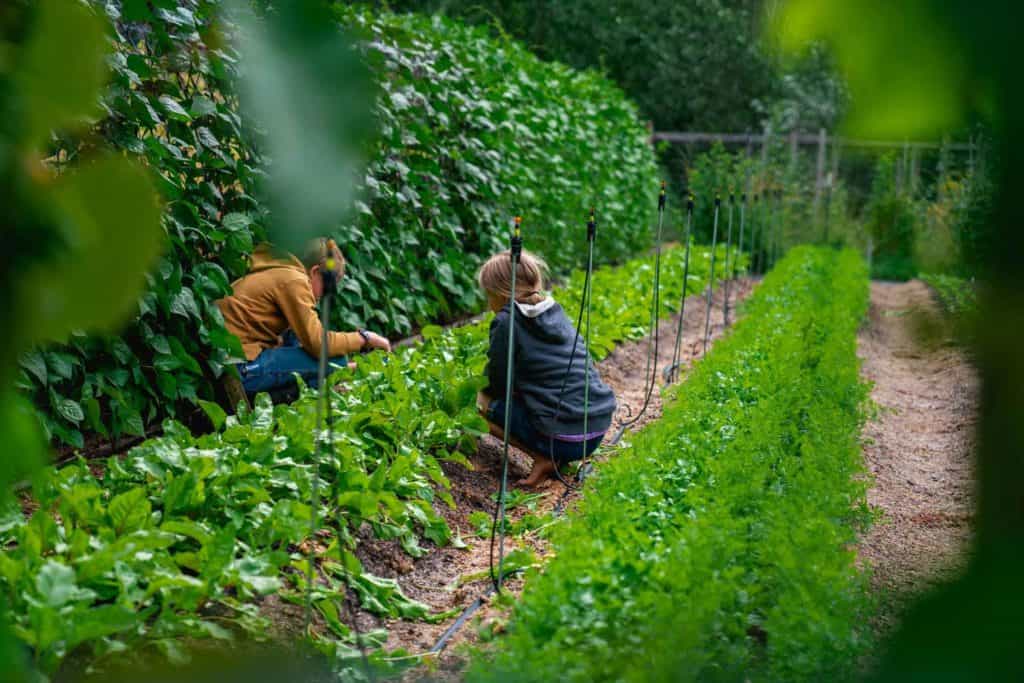
Spend a Small Amount of Time Working in Your Garden Daily
Block out some time every single day (or nearly every day) when you will work in the garden. The amount of time this takes will be determined by the size of your garden. If you’re gardening for two to four people, this may not take as long as it takes us.
Breaking this work up into smaller daily tasks makes gardening less overwhelming. Furthermore, by visiting your garden daily, you’ll be catching potential problems right away, and you can get ahead of little issues before they become big problems.
We spend a little bit of time every weekday out in the garden, first thing in the morning. It’s a great way for us to wake up and work together as a family to get the job done quickly.
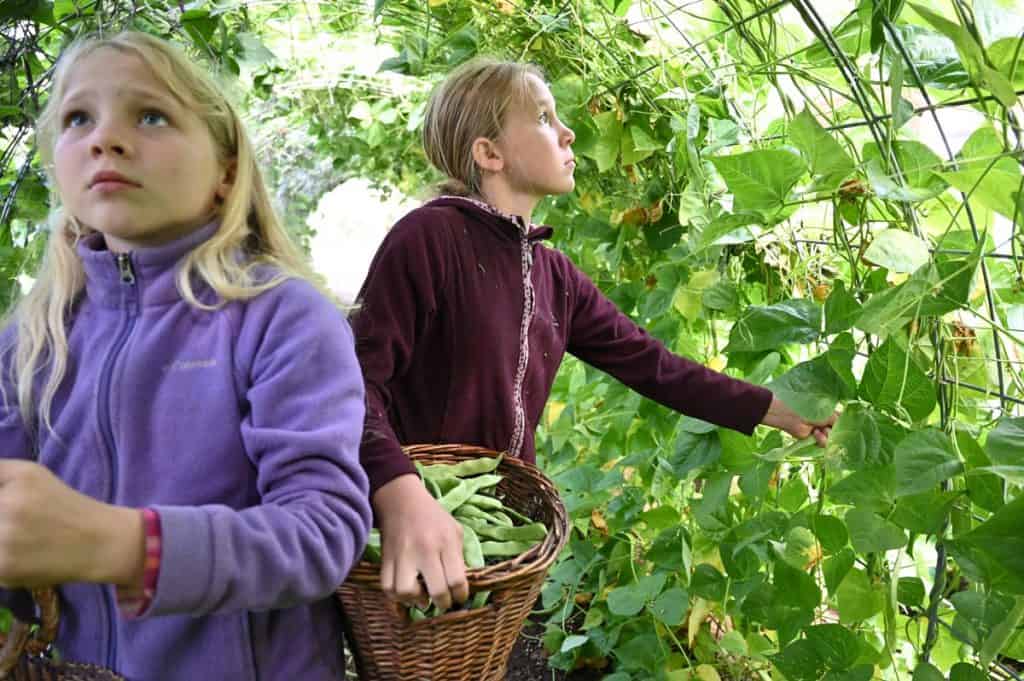
Spend a Large Chunk of Time Working in Your Garden Weekly
To keep up with larger garden tasks, it’s important to plan on spending one day a week working on them. For us, this is Saturday. We spend one four to five-hour timeframe as a family to get the larger projects done.
These times are great for big harvest and preservation days, maybe adding a new garden bed or planting a new row when succession planting.

Create a Master Calendar
I created a master calendar years ago and started adding tasks to them. I prefer the kind where you can see three months at a time. They’re large and hang on the wall where the whole family can see them and make adjustments as needed.
Year over year, we have been refining our garden tasks, slowly improving our systems and timing to where we’ve got it very dialed in for our specific microclimate.
Next to the calendar, I like to have a page of notes that give very detailed directions of everything I need to do that month. For example, on the calendar, I will simply say, “Start tomato plants indoors.” On the page of notes, it will list every variety of tomato plants to start, how many of each, any other information about start pots, etc.
This page of notes, which can be used year after year, removes all the decision-making that revolves around gardening!
If this method doesn’t appeal to you and you’d like something digital, you can check out the Seedtime App! Once you plug all the information in, it’s very similar to our system, but in digital form.
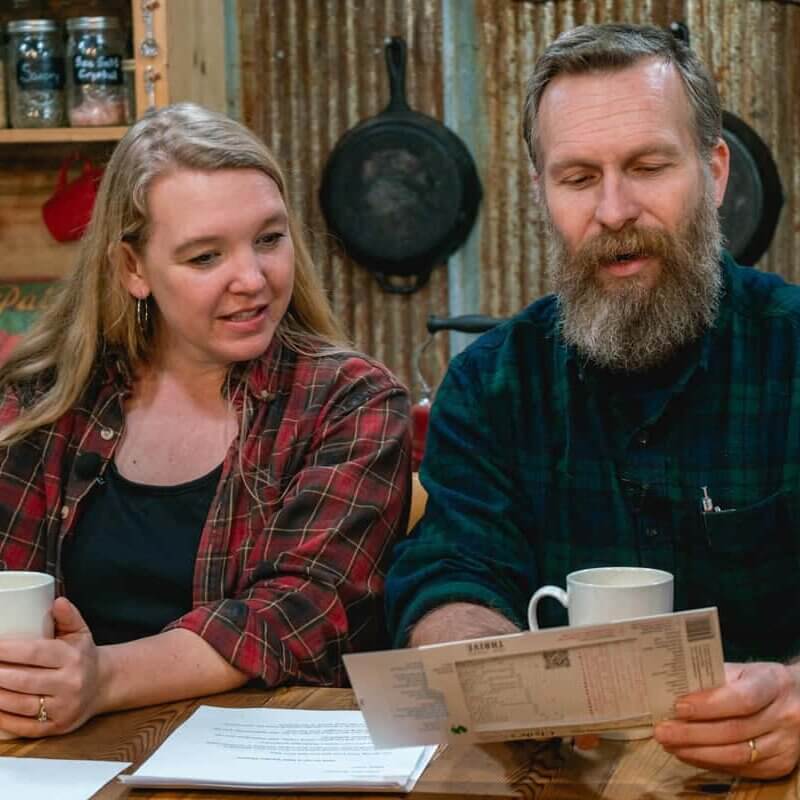
Use a Garden Planner
If you’ve been here for long, you know we love our Clyde’s Garden Planner (use that link and coupon code “HOMESTEADINGFAMILY.COM” for 10% off your order). We use our Clyde’s planner every single year and it’s so incredibly helpful. Learn more about how to use a vegetable garden planner here.
The Seedtime App can also help with planning. Having something simple and straightforward that gives you a roadmap for when to start plants indoors, when to transfer them outside, when to direct sow, and a general idea of when to harvest each crop is so great.
These garden planners will also help the first year you’re making your master calendar!
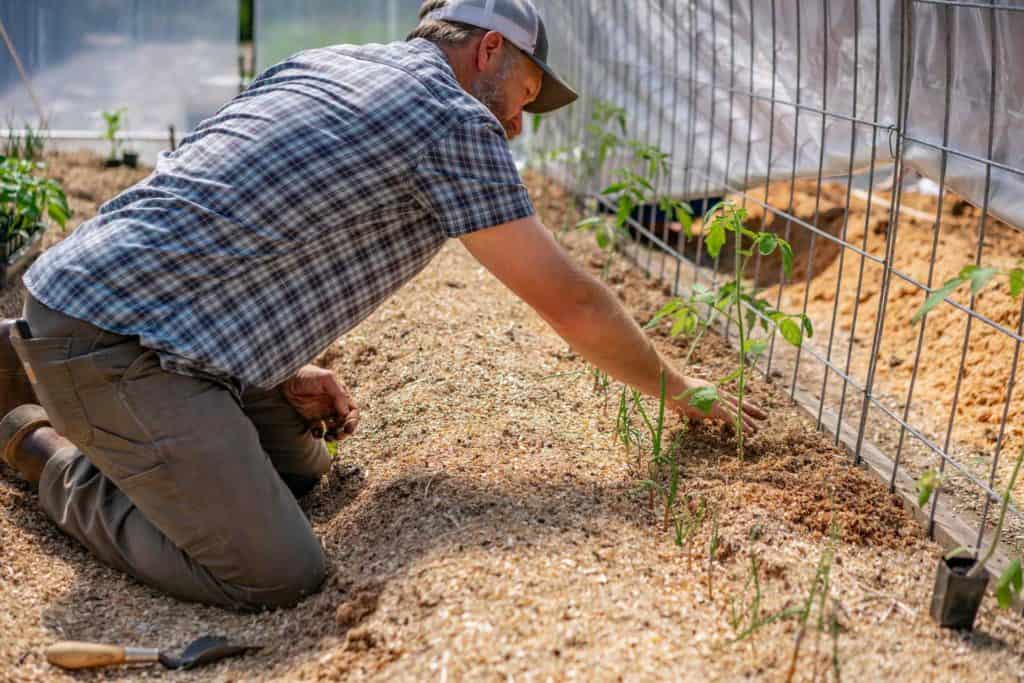
Use Mulch!
Using mulch in the garden will help suppress weeds, reduce the watering and reduce your overall work. You can learn more about how to keep weeds out of the garden and use gardening methods like no-till gardening or lasagna gardening.

Focus On Non-Fussy Plants
What do I mean by non-fussy plants? I mean, choose plants that grow well in your area and actually want to grow in your climate. For years, we’ve struggled to grow enough tomatoes to feed our family for a year, but tomatoes just struggle in our area!
Though we still grow them every year, we’ve shifted our focus and energy from maximizing our tomato harvest to maximizing the harvest of crops that love our climate, such as root vegetables, winter squash, and most brassicas.
Not only does this reduce our stress, but it increases our harvest because those crops all thrive where we live.

Shop Your Garden
When you start gardening in a way that is putting significant amounts of food on your plate, there’s a mental shift that must happen when meal planning. There might be produce growing in the garden that you’re not used to eating on a regular basis.
This can make it tempting to go to the grocery store to buy what you’re used to instead of finding more creative ways to eat what’s growing for free right outside your door.
What I love about this is it actually saves us quite a bit of time from going to the grocery store. We live about 35 minutes away from the store, so we like to research a few more ways to create delicious meals from what we’re growing.
Check out this post on the best way to use up garden produce with a homemade stir fry.
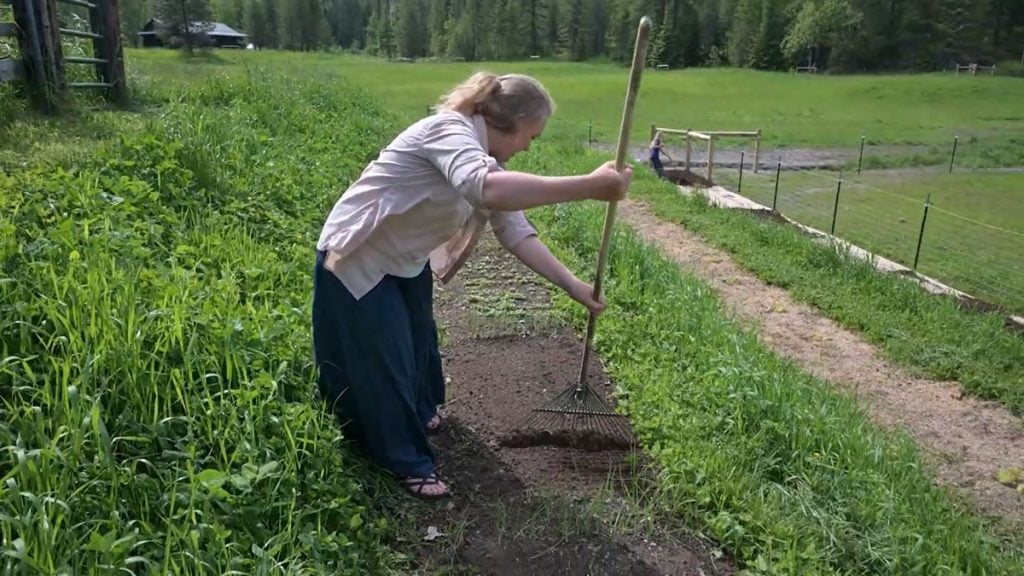
More Posts You May Enjoy
- Ultimate Garden Planning Guide (+FAQs)
- 10 Common Gardening Mistakes to Avoid
- My Favorite Tools for Gardening (And How to Care for Garden Tools)
- Gardening Resources: Our Top Picks
- Late Start Gardening Tips (It’s Not Too Late!)
- Making Raised Garden Bed Rows & Super-Charging Your Soil
- Instant Garden in Under Three Hours











